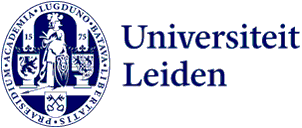
New treatments for life-threatening disease sepsis
Due to the increasing resistance to certain antibiotics, the life-threatening condition sepsis is becoming harder to treat. For her PhD project, Leiden pharmacologist Feiyan Liu used mathematical modeling to find out how antibiotics can be used more effectively to cure sepsis.

A recent survey showed that four out of five people in the Netherlands have not heard of sepsis. However, according to the World Health Organization (WHO), the relatively unknown disease causes about 11 million deaths worldwide each year. ‘Especially in low- and middle-income countries, the impact of sepsis is significant’, PhD researcher Feiyan Liu says.
‘Sepsis is an exaggerated reaction of the body to an infection’, she explains, ‘typically caused by bacteria.’ It can lead to organ dysfunction and in the most severe cases even to death. Treating sepsis is complex because the disease itself, the response of the body's immune system and the drug treatment all influence each other. As a ‘quantitative pharmacologist’ at the Leiden Academic Centre for Drug Research (LACDR), Liu examined how the treatment can be improved using mathematical modeling techniques.
Part of a large-scale international consortium
Liu, originally from China, points out that antibiotics are still the primary treatment for sepsis. But the growing resistance to many antibiotics poses a challenge. ‘It complicates the treatment’, Liu says. As part of her PhD project, she contributed to a large-scale international collaborative consortium that focused on antibiotic treatment of sepsis, particularly in young babies from low- and middle-income countries.
Liu’s supervisor, Coen van Hasselt, adds: ‘It was exciting to see how this collaborative effort between physicians, microbiologists and our expertise in pharmacology led to important recommendations for improving antibiotic treatment of young babies with sepsis.’
Why some treatments are successful in animals and not in humans
In addition to studying antibiotic treatments, Liu also investigated a second approach during her five years at the Leiden University. That approach aims to correct the overreacting immune response of the body instead of targeting the disease with antibiotics.

Although considered a promising new treatment, it is still in the early phase. Clinical studies on such treatments have failed thus far. However, interestingly, some of these treatments have shown success in animals. Using quantitative modeling methods, Liu tried to identify similarities and differences between animals' and humans' reactions to understand why that is the case.
Bringing together the scattered knowledge about sepsis
Ideally, a combination of these two types of treatments will eventually be used to cure sepsis. Throughout her PhD project, Liu demonstrated how mathematical models can bring together scattered knowledge about treatment of the disease. ‘Hopefully, we can continue to develop new combination treatments that are more effective in targeting the immune response in sepsis’, she concludes.
Feiyan Liu successfully defended her PhD on 14 June . After leaving Leiden University, she will continue her research as a postdoc at the Central South University (CSU) in Changsha, China. The group led by Coen van Hasselt will continue Liu's research on better treatment strategies for sepsis in Leiden.
Text: Samuel Hanegreefts
